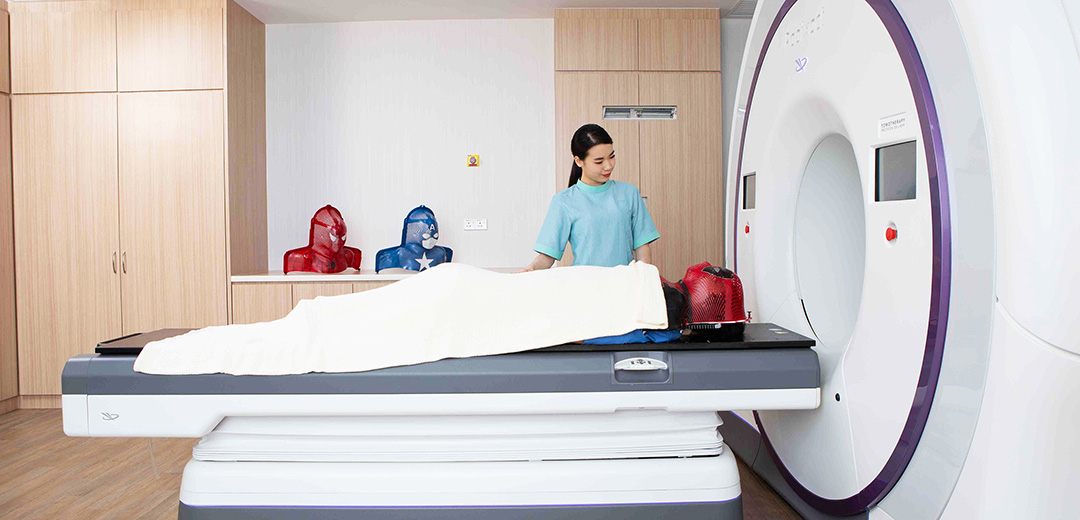Debunking 6 Common Cancer Myths: Facts You Need to Know
04 January 2020

Cancer is the disease caused by uncontrolled cell division and growth in a part of the body. The problem about the term ‘cancer’ is that it includes so many different types such as breast cancer, prostate cancer, lung cancer, leukemia and so on.
Cancers can be found in nearly every part of the body and today, we know of over 100 types of this disease! Grouping that many diseases into one name makes it easy for misconceptions to arise. Here are some of the more common ones:
Cancer means death.
This is one of the biggest misconceptions about cancer and is not necessarily true, as there are many different types of cancer. Numerous factors need to be taken into account to estimate the chances of survival of a cancer patient and determine the length of the patient’s life. One factor is the stage at which the cancer is found at – diagnosing it earlier means a higher chance of survival. Another factor is the rate of growth of the cancer, which varies. Some are fast-growing, which are deadly as they can quickly spread to other body parts, while others are slow-growing.
Chances of survival also really depend on the individual’s lifestyle behaviours. Regularly drinking alcohol, smoking cigarettes and eating unhealthy diets can result in a higher risk in attaining cancer. Lastly, advancements in the research of cancer in the recent years are increasing survival rates as well as allowing patients with cancer to live even longer than before.
Eating sugar feeds cancer.
The myth is derived from the fact that cells need glucose for growth. Cancers are cells which undergo uncontrolled growth, therefore eating glucose will fuel cancer growth. This is not true. Studies have been made regarding sugar consumption and cancer, and no link has been found. In fact, sugar is vital for the day-to-day energy needs of our body.
However, unhealthy diets lead to weight gain. Regularly eating abundant amounts of sugar is inclusive of this. Overweight and obese individuals are at a higher risk of many health diseases, including cancer, therefore sugar consumption must be kept at a healthy level.
Cell phones emit waves which causes cancer.
Currently, there is no evidence of cell phones and other technology causing cancer. Cell phones do emit radio-frequency, but as of most of the studies that have been conducted so far, there is no strong link between radio-frequency and cancers. Another example is microwaves, which uses radiation. However, the radiations emitted from microwaves are not energetic enough to cause huge chemical changes – unless you sleep in a microwave, then it is harmless.
Be wary of studies that claim that technology causes cancer. The studies are prone to confirmation bias, where the researcher is specifically looking for cancer patients linked to technology, therefore skewing the results to make it seem as though technology of any sort can cause cancer.
If a family member has cancer, does it increase my risk?
Myths regarding family members, genes and cancer go both ways: some say that having family members with cancer means you are going to get it in the future, while others say that having family members without cancer means you aren’t at risk of getting it. These two statements are both untrue.
Cancer depends on the individual’s genes and the mutations that come with it. Every person has unique genes and only about 5 to 10 percent of cancer cases are inherited mutations. The rest are caused by mutations happening during a person’s life – whether it be degeneration of cells over time, exposure to harmful substances such as radiation or smoke, or developing unhealthy habits of drinking alcohol and overeating.
I have a dark skin tone, I can’t get cancer!
Absolutely false! Everybody – including you, can get skin cancer. Skin cancer occurs when the skin is exposed to ultraviolet radiation, which comes from either the sun or tanning beds. There are three main types of skin cancer: squamous cell cancer, basal cell cancer and melanoma. Different shades of skin tones are more likely to get different types of skin cancer.
It is true that lighter skin tones are more likely to get skin cancer and this is due to the lack of melanin. Lighter skin tones are generally more susceptible to get squamous cell or basal cell cancer. However, darker skinned people are at a higher risk of getting melanoma, which is the most dangerous type out of the three due to the highest probability of spreading to other body parts.
This myth is dangerous as many are unaware that skin cancer is a risk to them and ignore obvious symptoms of skin cancer. Doctors are unable to diagnose patients early enough and treat the cancer properly. Time is a crucial factor in diagnosing skin cancers, which are easily treatable if diagnosed early. Symptoms you could look out for are skin moles with irregular borders, lumps or darkening of the skin.
Can cancer be cured with 'natural' herbal products?
Many claim that current cancer treatments are not successful enough and are “unnatural” for patients. People are more inclined to try out more “natural” options for treating cancer, such as consuming specific extracts or herbs. Some of the alternative treatments are harmless and may improve the quality of life of the patient.
However, individuals trying out these alternative treatments must be aware of the possible negative effects of these treatments. They are called alternative treatment for a reason – these treatments have not gone through immense amounts of research and are not proven to alleviate the condition of cancer patients. In the past, alternative treatments have had negative effects on patients, causing all sorts of poisoning and even causing new cases of cancer. Be wary of alternative treatments!
References:
- http://www.mdanderson.org/patient-and-cancer-information/cancer-information/cancer-topics/prevention-and-screening/food/cancersugar.html
- http://www.cancer.gov/about-cancer/causes-prevention/risk/myths
- http://www.cancer.gov/about-cancer/causes-prevention/risk/radiation/cell-phones-fact-sheet
- http://www.skincancer.org/skin-cancer-information/ask-the-experts/can-darker-skinned-people-get-skin-cancer
- http://www.cancer.org.au/news/blog/treatment/medical-myth-natural-cancer-therapies-cant-harm-you.html
Tags: cancer






